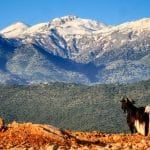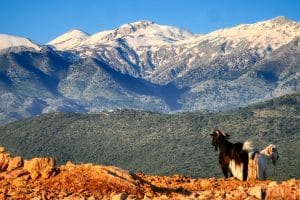Trees of Greece
List of trees in Greece
Olive Tree (Olea europea)
 Description: by planting two or three trees very close you get one tree with twined trunks
Description: by planting two or three trees very close you get one tree with twined trunks
Environment: Can grow 100m above sea level, but it is more common at about 600, dry soil
Fruit: green or black olives, depending on when they are picked (green Nov-Dec, black Jan-Feb)
Origin: Asia Minor, Syria, brought in by Phoenician merchants
Interesting fact: Can live up to 1500 years, and many plantations we see today are from the 16th century. It has only been proved they live for 800 years though. It takes about 50 years to bear fruit from the time it’s planted. In antiquity connected with the goddess Athena.
Pine Tree (Pinus halepensis)
Description: hard wood rich with resin, good for building boats
Environment: Grows from sea level up until about 100m altitude.
Interesting fact: The resin is used in the wine retsina since antiquity as a preservative. Also see the myths of Agdistis and Pitys.
Pomegranate (Punica granatum) Description: Big, red flowers.
Description: Big, red flowers.
Environment: Grows wild.
Fruit: Shell is brown pink and taste is very sweet when ripe.
Origin: Mentioned already in the Odyssey.
Interesting fact: Fruit is ripe in September. From it you make Grenadine, and its stains are extremely difficult to wash out.
Carob (Ceratonia siliqua)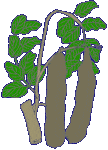 Description: 10m, small leaves, spread branches, green small flowers
Description: 10m, small leaves, spread branches, green small flowers
Environment: Rocky places near the sea, often planed near almond trees.
Fruit: Big, long, goes brown when ripe. Sweet taste, often used to feed animals.
Origin: Asia Minor, North Africa
Interesting fact: It’s seeds always have the same weight: 0,205gr. The tree’s Greek name, Keration, has given the weight measure carat it’s name, since the seeds were originally used for weighing gold and diamonds. According to the Bible John the Baptist lived of this fruit when out in the
Laurel (Daphne)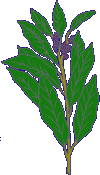 Environment: Grows in forests, or in various places on its own.
Environment: Grows in forests, or in various places on its own.
Interesting fact: Connected with the nymph Daphne and the god Apollo.
Used for cooking, and was made into wreaths that were put on the victors in the Pyheian games in Delphi
Mastic Tree (Pistacia lentiscus) Description: 4m, looks like a big bush
Description: 4m, looks like a big bush
Environment: Plantations, fairly dry soil
Fruit: red-black
Interesting fact: Its resin is collected and when stale is used in varnish. In antiquity the actors used is to glue the beard onto their faces, and up until the 20th century it was used to fill cavities in teeth, as an ingredient in liqueur and cakes, and as Band-Aid. The ancient Egyptians used Mastic when embalming their dead. Chewing on it is supposed to be good for you.
Fig Tree (Ficus carica)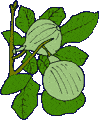 Description: 5m, dark green leaves, unisex seeds
Description: 5m, dark green leaves, unisex seeds
Environment: Grows wild on rocky ground
Fruit: Bears fruit all year round, but only tasty in Aug-Sept. Only male fruit is edible, the female is full of larvae.
Origin: Asia Minor
Interesting fact: Adam and Eve covered themselves with fig leaves. There are hundreds of different kinds.
Fig Cactus (Opuntia ficus-indica)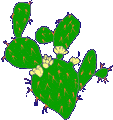 Description: 5m, yellow flowers
Description: 5m, yellow flowers
Environment: On dry ground, rocky places.
Fruit: Yellow or red, edible fruit.
Origin: Mexico, imported to Europe by the Spanish.
Interesting fact: In the old days lice were planted on it to eat the fruit. They were then dried and put in water which gave the colour carmosine, used in Campari and lipsticks.
Jacaranda (Jacaranda mimosifolia) Description: small, green leaves, blue or violet flowers
Description: small, green leaves, blue or violet flowers
Environment: Planted near houses.
Origin: Brazil
Interesting fact: hundreds of flowers in each tree make the tree almost luminecent
